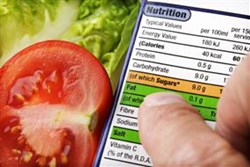


In particular due to the exceptions and separate legislation for certain additives. Food producers usually cannot avoid the use of additives in the production of their foodstuffs. These substances are required for various technological functions in the product, such as improving its shelf life, colour, texture or stability. Additives that are permitted have an E-number on the label.
European legislation makes the use of additives in foodstuffs complex. In particular due to the exceptions and separate legislation for certain additives.
Food producers usually cannot avoid the use of additives in the production of their foodstuffs. These substances are required for various technological functions in the product, such as improving its shelf life, colour, texture or stability. Additives that are permitted have an E-number on the label. The additives that may be used in a particular foodstuff are listed in European Regulation 1333/2008.
It is very important to also take into account the provisions of the Regulation in “restrictions/exceptions”, as the use is often not allowed in the entire food category. “The exceptions and additional rules make it complex,” says Isabelle De Boeck of Précon Food Consultants. “We find that the question of whether an addition is a processing aid or an additive can cause a fair amount of confusion for our customers.” She explains: “A processing aid only has to be mentioned on the packaging if it contains an allergen. Think of a belt lubricant in a biscuit factory.”
Sometimes a food manufacturer may also need to add extra warnings on the label. This is the case, for example, when using polyols, such as sorbitol and xylitol. The packaging must then state: “Excessive use can have a laxative effect.”.
An E-number may only be added when four equally important conditions are met. First of all, the technical need for the additive must be sufficiently established. It must also be clear that the function of the E-number cannot be achieved by other technically sound methods. Of course, the use and quantity of the E-number must not constitute a danger to public health.
Furthermore, the use of the E-number must not mislead the consumer. The controlling body verifies whether the additives added to foodstuffs are permitted and whether they are labelled appropriately. If all this is done correctly, there is no danger to public health.
To learn how to label additives correctly, it is important to gain experience in consulting the comprehensive European Regulation 1333/2008. By regularly looking up products in this legislation, it becomes easier to find out which additives you can and cannot use and in what quantities.
This certainly applies to a product containing one or more compound ingredients with additives. These additives then end up in a finished product, whether intentionally or not. This is called the ‘carry-over principle’. In such cases, it is necessary to find out whether the additive in question still has a function in the finished product and whether it should then be mentioned in the list of ingredients of the finished product.
Photo: Précon Food Consultants

“It is always advisable to maintain a critical perspective on your own products and adjust them to contemporary needs where necessary”, emphasises Marijke Adriaens, CEO of frozen food company Fribona. “For consumers, taste is still the main consideration. It is essential to work towards a product that is, above all, tasty and visually appealing.”...

Scientists from KU Leuven have discovered how oil penetrates snacks during and after the frying process. Recent research findings point to advanced frying techniques that reduce oil absorption, as well as innovative methods to limit oil uptake during the cooling phase. This paves the way for the development of healthier snacks without compromising...

Food companies are increasingly targeting a wider range of consumer groups. Speaking at an event organised by Fenavian, Julian Mellentin of New Nutrition Business said this strategy offers significant opportunities to respond to the diverse health needs and interests of today’s consumers. “Consumers enjoy both animal and plant-based proteins”, he...

Backed by financial partners, Start it @KBC is launching the accelerator programme Scale it Agro, aimed at scale-ups offering sustainable and innovative agricultural solutions for agriculture and horticulture businesses. Kjell Clarysse, programme director at Scale it Agro, goes into more detail.